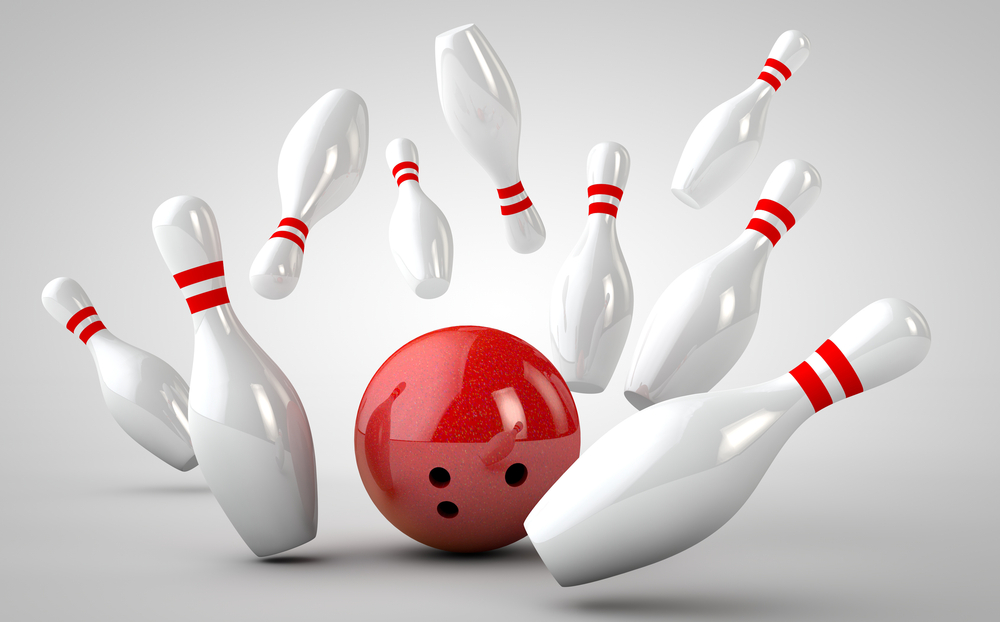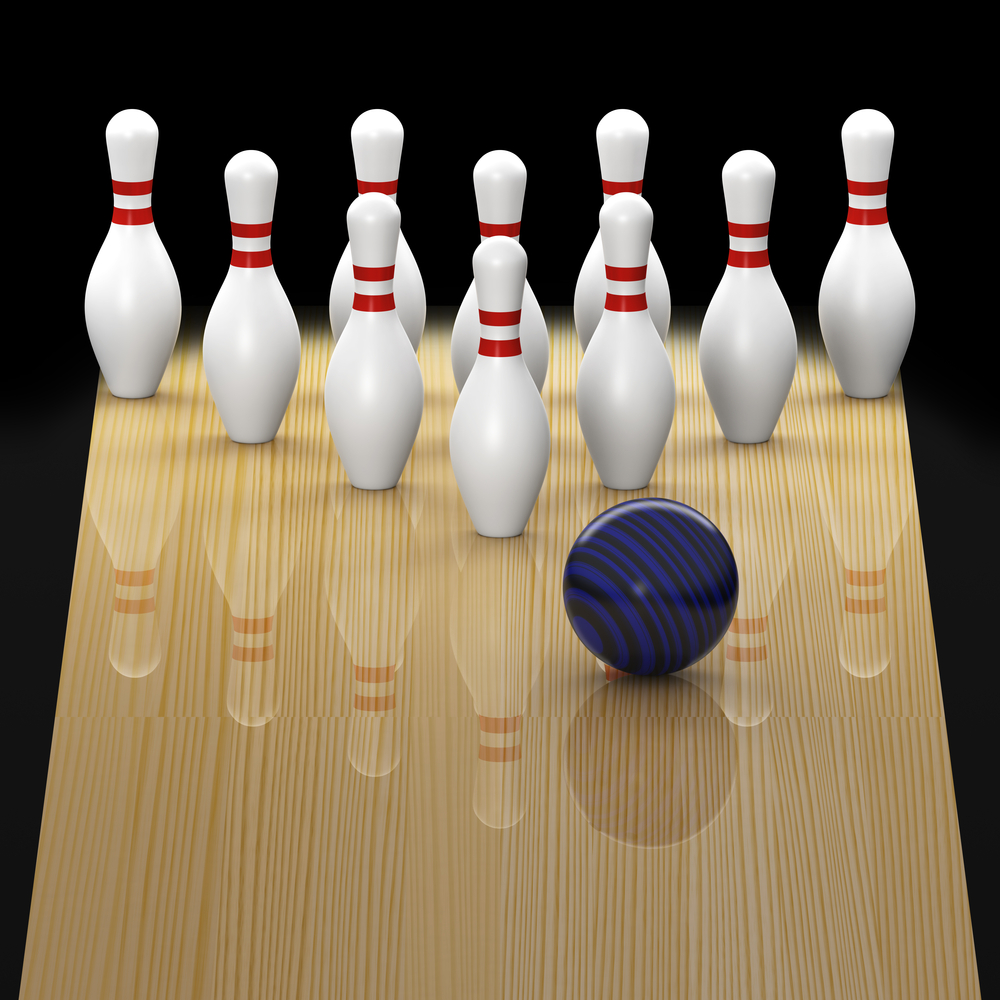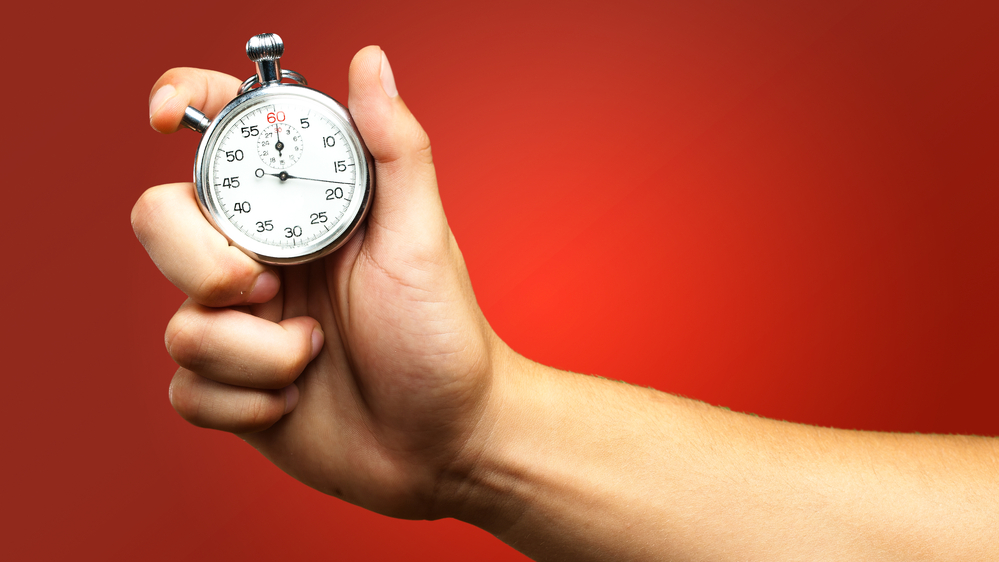
One of the key components of successful bowling is adaptability. As you travel to different games, leagues, and tournaments, you will encounter different lanes with different conditions.
Some may have different oil patterns for you to work through, and some may not be in the best shape and affect the reaction of your ball.
Regardless of these varying factors, it is important that you take steps to ensure you have a variety of skills that can help you adapt to these different conditions, one of these skills being the knowledge of how to control the speed of your bowling ball. A useful skill to have is knowing how to control your bowling speed.
Contents
Why is Knowing How to Control Your Bowling Ball Speed Important?
Lane Conditions
Knowing how to control your bowling ball speeds isn’t just important for traveling bowlers but for bowlers of all abilities, experiences, and locations.
Being able to control the speed of your bowling ball will help you gain higher, more consistent scores as well as more predictable reactions and throws from your ball. This is due to the fact that by knowing how to change up the speed of your ball, you are able to adjust to lane conditions as you play your game.
For example, when you arrive at the alley, you may have a bowling lane that is considered ‘wet’. This means that there is a heavier saturation of oil laid down on the lane, which can affect how your ball reacts. By knowing how to slow down your speed, you are able to safely traverse the slippery lane without your score being affected.
Coincidentally, if you come across a ‘dry’ lane, one where very little oil is present, then knowing how to speed your ball up will help you get your ball to the pins without losing power due to friction.
Key Takeaways
- Control Bowling Ball Speed for Lane Adaptability: Adjust your bowling speed to adapt to different lane conditions, like 'wet' (more oil) or 'dry' (less oil), to improve your score and ball reaction.
- Understand Coverstock Material Impact: Know how your bowling ball's coverstock material (solid vs. resin) reacts to lanes. Adjust speed accordingly to maintain high game performance.
- Optimal Bowling Speed for Strikes: Aim for a bowling ball speed of 16-17 mph at pin impact, starting with a release speed of 20-21 mph for the best strike potential.
- Measure and Adjust Your Bowling Speed: Use automatic scoring machines for a quick speed estimate or a stopwatch for more accurate measurement. Adjust your throw based on speed feedback to enhance your control.
- Speed Adjustment Techniques: For dry lanes, increase speed by raising the ball higher before release and adding muscle on the downswing. For wet lanes, decrease speed by lowering the ball and using a gentler swing.
Coverstock Material
Knowing how to adjust your speed will also come in handy if you use an assortment of bowling balls with different coverstock materials.
A solid coverstock will react differently to a lane than a resigned coverstock, and knowing how to adapt your speed to each material’s needs will help keep your game elevated as you switch between ball types.
Hook

Being able to adjust your speed will also help you control the amount of hook your ball produces as it makes its way down the lane.
Learning how the bowling ball hooks can be a challenge in itself, but the rewards are well worth it with more powerful revs and better aim into what is called the ‘pocket’ when you learn how to actually hook it.
By adjusting your speed you can also work to adjust your hook to a variety of pin formations, helping with aim and power.
The best bowling ball speed is the one that breaks, or hooks toward the pocket at the proper time for a strike.
Power
Fast ball speed produces more powerful revolutions, creating more kickback and pin impact. This can be great for blasting through pins but a fine balance does need to be involved.
There is such a thing as too much power in the sport of bowling and knowing your average speed, when more ball speed is needed, or when to dial back your speed will help you adjust the power behind your throws.
For instance, it’s your first throw, all ten pins are placed and ready to be decimated by your ball. Your throw a fast, powerful hook but, due to the speed, lose a bit of your control and are faced with the dreaded split.
Knowing that a fastball may not be as well aimed, you dial back the speed and focus on your control, picking up the split and gaining yourself a nice spare.
| Factor | Importance | Optimal Speed | Adjustment Tips |
|---|---|---|---|
| Lane Conditions | Adjusting speed for 'wet' (more oil) or 'dry' (less oil) lanes to maintain control and accuracy. | 16-17 mph at pin impact | Speed up on dry lanes, slow down on wet lanes. |
| Coverstock Material | Adapting speed to how the ball's cover reacts to the lane for consistent performance. | Depends on material & lane | Understand your ball’s reaction to adjust. |
| Hook Potential | Controlling speed influences the ball's hook, affecting aim and power towards the pins. | Balanced with lane condition | Adjust speed to modify hook for pin formations. |
| Power & Control | Achieving a balance between power for pin carry and control to avoid undesirable splits. | Start with 20-21 mph release | Dial back for control, increase for power. |
| Calculating Speed | Using automatic scoring or a stopwatch to measure, aiming for consistency in adjustments. | 18 mph average | Use scoring machines or manual timing for feedback. |
What is the Optimal Speed of a Bowling Ball?
The speed of your ball changes as it rolls down the lane. While you might release a 20-mile-per-hour ball at the beginning of the lane due to forces such as friction and gravity, your ball may only be going 16 miles per hour upon pin impact.
So just how fast should your ball be going as it makes its way down the lane, and just how do you measure it?
A study done by bowling manufacturers and the United States Bowling Congress has revealed that the optimal speed for the best results is 16-17 miles per hour (mph) at pin impact.
In order to generate enough force to reach this optimal ending speed, you should start with a 20-21 mph ball upon release, with your average speed clocking in at 18 mph.
How to Calculate Your Bowling Ball’s Speed?
Automatic Bowling Scoring Machine
One of the ways you can find out your bowling ball’s speed is to rely on the automatic scoring device found in bowling alleys. This device uses a variety of systems to detect when pins are up, down, or need to be re-stacked, but that is not all it can do.
The device can also be used to measure your bowling ball speed as your ball approaches the pins. While useful for a quick estimate, this method does have its drawbacks.
The device will only give you one measurement of speed, and it’s not measured at the point of impact. This makes it hard to get an accurate average of your speed and can mess up your adjustments as you learn how to control your ball’s pace better.
Stopwatch

Another method to find your bowling ball speed is to use a stopwatch to measure the time from your bowling ball’s release to the moment of pin impact.
This measurement of elapsed time will help you gain a more accurate measurement of your bowling ball’s speed due to the two measurement points used to configure your average speed.
Here’s how it works:
- Have a friend ready themselves with a stopwatch.
- At the point of your ball’s release, they should start the time; upon impact with the head pin, they should stop the timer.
- You want to consistently aim for the same place, with the head pin being the best point.
- Shoot a series of five throws, with your friend measuring each throw.
- Once you have all five throws completed, average the scores.
- Take your average and plug it into a bowling ball speed chart.
- Voila! You now have an estimate of your bowling ball speed.
While not perfect, this method tends to give great results with a little practice. Don’t be afraid to measure yourself biweekly to look for improvements.
You can also use this method to see if you are successful should you be attempting to learn how to speed up or slow down your bowling ball speed.
Bowling Ball Speed Chart
In the case of bowling balls, the shorter the time it takes to travel down the lane, the faster your ball is going. To reach that optimal speed, you want an average of 2.5 seconds for your ball to make it down the lane.
However, due to the margin of error being +/- /-0.150.15 of a second, speeds between 2.3-2.7 produce good results as well as long as your aim is focused.
Elapsed time/Average Ball Speed-Optimal ranges are in bold.
2.0 sec/20.8 mph
2.1 sec/19.9 mph
2.2 sec/19.0 mph
2.3 sec/18.1 mph
2.4 sec/17.4 mph
2.5 sec/16.7 mph
2.6 sec/16.0 mph
2.7 sec/15.4 mph
2.8 sec/ 14.9 mph
2.9 sec/14.4 mph
3.0 sec/13.9 mph
How do You Increase Your Bowling Ball Speed?
So now that you know how to find your average ball speed, it's time to focus on being able to control your bowling ball’s speed, starting with how to make it go faster.
As we mentioned before, increasing the speed of your bowling ball is a great way to traverse over dry lane conditions, where friction has a greater hold on your ball due to the lack of oil.
To speed up your bowling ball, you need to implement a small, simple trick. You need to raise your bowling ball 3-4 inches higher than your normal stance.
If you are bowling in the proper form, your bowling ball should naturally be raised around your waist before you move into your approach, but by raising it a few inches, we let gravity work to increase the speed of your ball.
If 3-4 inches doesn’t give you the burst of speed you would like, then you need to switch things up a bit. Instead of raising it only 3-4 inches up past your normal starting point, raise the ball 6 inches to a foot.
Once again, you will be using gravity to help rev up your ball and increase speed. One important detail about this level of raising is that you will need to adjust your approach to compensate for the time needed to properly throw your ball from its higher point.
In order to adjust to this change of swing, you will need to move back as many inches as you have raised your ball. For example, if you lift your ball a foot higher from its original starting position, you should move twelve inches back before beginning your approach.
Now let’s say you encounter a really dry lane; we’re talking bone dry here. You’ve tried adjusting your ball’s height in the release, but you are still not getting the speeds you desire. This is where we help gravity out by adding in a little muscle.
When you find that you need to add muscle to get the faster speed you are looking for, you’ll need to raise your ball to its higher height and add muscle to your throw only after the peak of your backswing and on the down portion of your swing.
This addition of muscle on the downswing combined with gravity will naturally quicken your pace as well, resulting in a natural, faster ball.
You may, however, find that during this added muscle technique, your ball begins hooking too much as a result of the added revolutions. (How many times the ball spins on its axis.)
To combat this increased hook, open your wrist more upon delivery, and the problem will hopefully stop.
How do You Decrease Your Bowling Ball Speed?
Now that we’ve figured out the trick to speeding up our ball, let's take a look at how to slow it down. A big hint that you need to slow down your ball is that it skids right past your desired breakpoint, a telltale sign that the lane is ‘wet’ or heavily saturated in oil.
To combat this skid, your only hope is to slow your ball down and hope it catches your desired break point, but how do you go about slowing it down?
Well, the process is actually the opposite of speeding up your ball! Instead of raising your ball so many inches to gain speed, you will want to lower your ball from its starting original starting position (which, again, should be around the waist) by so many inches.
By lowering from 2 inches to a foot, we are able to adjust just how slow our ball is going, decreasing momentum and giving it a better chance to ‘grab’ its break point.
To adjust how many inches you lower your ball, remember the closer to the ground your ball is, the slower it will be. So if you just want to slow your ball down a little bit, drop it 2 inches and experiment from there.
If you desperately need to slow it down, drop it a foot lower and use no muscle in your swing. Just let gravity take over and allow your arm to swing naturally.
You can also bend your knees a little to help slow your approach or adjust your approach so that you start closer to the foul line. Both of these methods help slow you down naturally as you adjust to the smaller span of time you have to throw your ball.
Remember, gravity is your friend, so let it do its job!
By holding our ball lower during our approach, we are once again letting gravity take over our swing, something we want to let happen!
By using gravity to adjust our speeds, we gain consistent shots even as we tweak our speeds, with better results showing over practice and time.
My Final Words
Mastering the art of controlling your bowling ball's speed is crucial for adapting to the diverse conditions you'll encounter at local bowling centers. As suggested by USBC guidelines and ball manufacturers, the ideal speed lies within a sweet spot of 16-17 mph at pin impact, starting with an average bowling speed of 20-21 mph from the bowler's hand. This effective speed range maximizes pin carry and pin action by finding the perfect entry angle and rev rate, which is crucial for hitting strikes consistently.
To elevate your game, start concentrating on these key factors:
- Understanding the influence of ball weight (lighter ball for more speed).
- Practicing at different lanes to get a feel for the speed adjustment needed.
- Utilizing bowling tips focusing on achieving more force and pace with every shot.
Remember, a slight mph tolerance can significantly affect your game, so refining your ability to control the ball's speed and impact is essential for consistently finding that sweet spot.
Kira Byrd, a Certified Fraud Examiner, holds a B.S. in Accounting from the University of Alabama at Birmingham. With a passion for bowling from her childhood, Kira has poured her expertise and personal experiences into creating and nurturing Bowling For Beginners. Kira's mission is to meet new bowlers where they are and guide them toward consistently achieving higher scores. With a focus on skill development and strategic techniques, she empowers readers to take control of their game and unlock their true potential.
Bowling For Beginners embodies strict editorial integrity, ensuring reliable and unbiased information. Kira's commitment to delivering valuable insights and practical strategies is reflected in every article. Here's an explanation of our editorial policy and how we get money.





